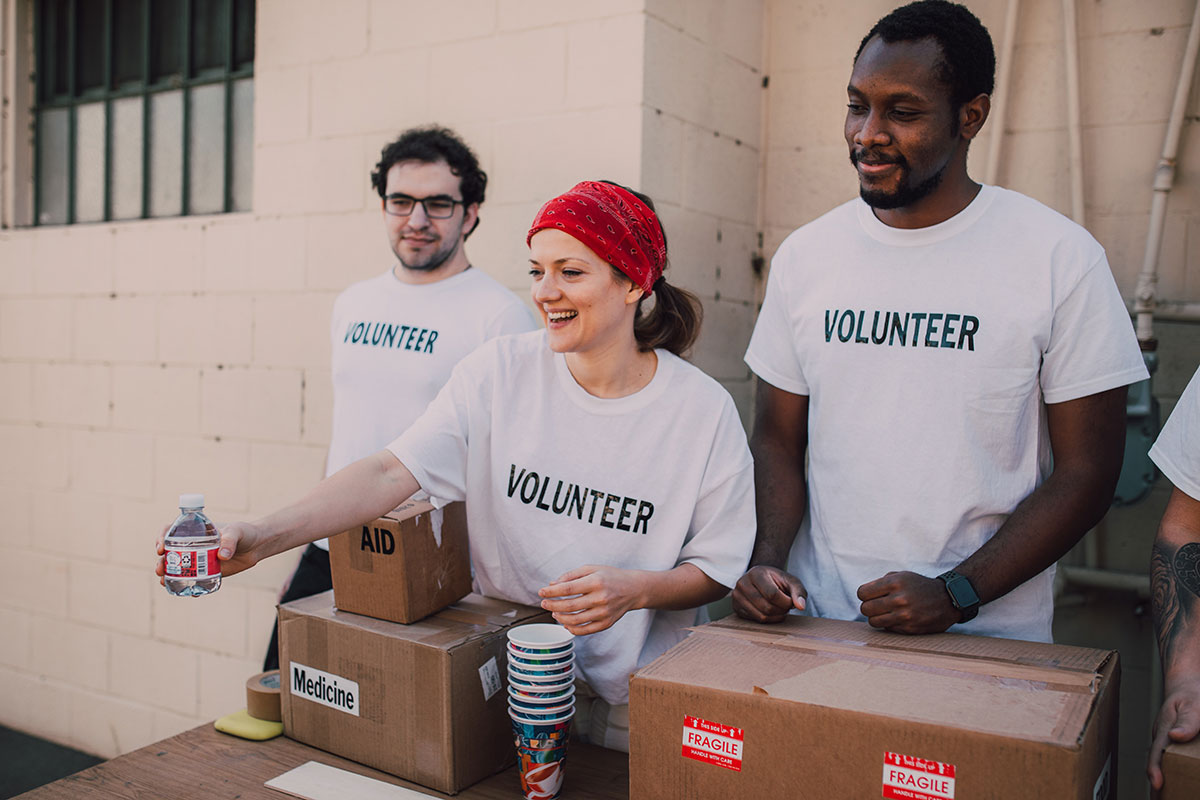Is your event fast approaching? Whatever its format, it’s likely that you’ll need help and that you won’t be able to offer payment for all of it. That’s where volunteers come in! With effective planning, good interpersonal skills and excellent communication, you can build a team of volunteers who will help you make your event a success.
As an event organiser, it’s your role to recruit, train and manage a team of volunteers with the qualities you need. Below, you will find the ten key steps for building and managing an effective team of volunteers for your event.
Summary
- Define your specific needs
- Assign roles and responsibilities
- Create incentives for volunteering
- Search for potential volunteers
- Interview the selected candidates
- Communicate clearly and regularly
- Train your volunteers well
- Ensure you are informed about the law
- Be attentive on the day
- Show your volunteers you are grateful
1. Define your specific needs
Why do you need volunteers — before, during and after your event? The first step for building a team of volunteers involves determining what you need them to do for you. Create a list including the tasks to be carried out during your event as well as the skills needed to complete them.
Bear in mind the types of people that you need to recruit. If you need to sell goods, then you should find outgoing people. It’s likely that you’ll also need volunteers with specific physical capabilities. For example, when stationed at an event it’s common to be lifting heavy objects or standing for long periods of time.
2. Assign roles and responsibilities
Once you’ve defined your needs, it’s time to turn them into roles and responsibilities. Examine your list of needs and look for items that can be grouped together. Create flexible categories with sub-teams based on the duties of each post, e.g. ticketing, entrance management, logistics, communication, cloakroom, etc.
You can then take this information and write up a job description for each role. Be sure to include the responsibilities, skills or knowledge required to carry out the work, and the time by which it needs to be completed.
The aim is to clearly define expectations for your volunteers to allow them to focus on the roles that suit them best. The more detailed the job descriptions are, the better. It’s preferable to ‘scare off’ potential volunteers who wouldn’t be fully motivated by their roles than to hire people who could do more harm than good at your event.
3. Create incentives for volunteering
Few people volunteer for events without expecting anything in return. It’s therefore up to you to give them a reason to volunteer by offering them something they can’t resist. For a festival, this could take the form of free tickets. For a professional event, it could be as simple as the opportunity to add a line to their CV or obtain a reference from you after the event.
Don’t just offer the incentives that suit you. Instead, you should identify what would encourage potential volunteers to join you on your adventure. What advantages or experiences can you offer them that they would see as having value that is equal to, or more than, the time spent working at your event?
4. Search for potential volunteers
Put out an advert on several of your media such as your website or on social networks, highlighting the goal of your approach. Add the main fields required for future candidates and insist on the fact that the service is free, and therefore not paid, to ensure you are in agreement with the volunteer from the outset.
The local community is another perfect place for finding volunteers. You can also ask for advice from the venue that is hosting your event. Get in contact with the local chamber of commerce and the town or city’s leisure department, and ask if there are any ways to publicly announce that you are looking for volunteers for your event. You can also contact local newspapers and radio stations to seek publicity or place an advert.
5. Interview the selected candidates
When you start receiving applications from potential volunteers, it’s important to ensure that they apply for the roles that best suit their skills and interests. Consider creating a pre-screening questionnaire dedicated to recruiting volunteers on your web page.
After selecting the best profiles, plan a meeting in person with the aim of explaining your event’s operation and details — including the time, location, equipment, dress requirements, etc. — as well as tasks that will be requested in the future.
If you don’t have the time to personally interview each potential volunteer — which is often the case for large events — as a minimum use the pre-screening survey and, if possible, have a phone or video conversation with them. Don’t forget to ask them what role they would like to have. Just because someone is a marketing specialist, doesn’t mean they’ll want to have this role during your event. They might want to do something completely different! Give them a choice if you can, and they will probably be more satisfied with their experience as a volunteer. This counts towards building loyalty among your team.
6. Communicate clearly and regularly
Good communication is essential for building an effective team of volunteers. You should communicate frequently with all of your volunteers to ensure they are aware of anything that could affect them during your event. Frequent communication keeps them involved and helps establish a relationship, which will undoubtedly reduce setbacks.
To save time and send the right messages to the right people at the right time, use a volunteer management software such as WeezCrew.
Regularly organise team meetings by telephone or online using tools such as Join.me or WhatsApp.
7. Train your volunteers well
Training is essential for each volunteer. They must be aware of the tasks assigned to them, deadlines, who to ask for help, their itinerary for the day of the event, and emergency plans. Ensure that they have access to all the tools they need to carry out their work and that they know how to use them.
Moreover, your volunteers must understand what is expected of them in terms of conduct, dress code, and so on. Train them on how to report and address problems depending on who they are dealing with (e.g. ticket purchasers, sellers, VIP guests, artists, etc.).
If they don’t turn up, arrive late or don’t do their work well, they need to know that this will inevitably have consequences. Remember to also inform them of practical details such as where to park on the day of the event, what food will be available to them, break times, etc.
8. Ensure you are informed about the law
Although volunteers aren’t your employees, there are laws that require you to respect a certain framework. All rights enjoyed by volunteers can be found on gov.uk/volunteering. So, be rigorous and inform yourself of the rules before writing up job descriptions and recruiting individuals.
You will probably also have to find insurance for volunteers. You will need to give them breaks after a certain number of hours of work, and you won’t be allowed to replace paid workers with volunteers.
9. Be attentive on the day
It’s the big day. Ensure that each of your volunteers is at their workstation. If candidates drop out at the last minute, consider hiring more volunteers next time to avoid unpleasant surprises.
Listen to your volunteers, too. Offer them rewards such as the chance to enjoy the event at the end of their shift or access to food and beverages.
These options will ensure your volunteers will want to work at future events with you.
10. Show your volunteers you are grateful
Your volunteers expect a genuine thank you, in person, by email or by phone. Tell them how much they’ve helped you and what you’ve been able to achieve thanks to them. Personalise each thank you, as your volunteers are unique and want to feel that their time has helped in a wider sense.
There are no revolutionary tools for hiring volunteers that meet your event’s standards. For everything else, make your life easier by firstly opting for an all-in-one ticketing solution, as well as taking advantage of seamless access control, and even a cashless payment system. Discover all of our solutions’ features by clicking on the button below:
To optimise the recruitment of your volunteers and simplify all operational management (mission descriptions, sending communications, accreditations, provisions, etc.), we strongly advise you to turn to a specialised solution.
Explore the complete features of WeezCrew and discover how it meets all your requirements for volunteer management:




